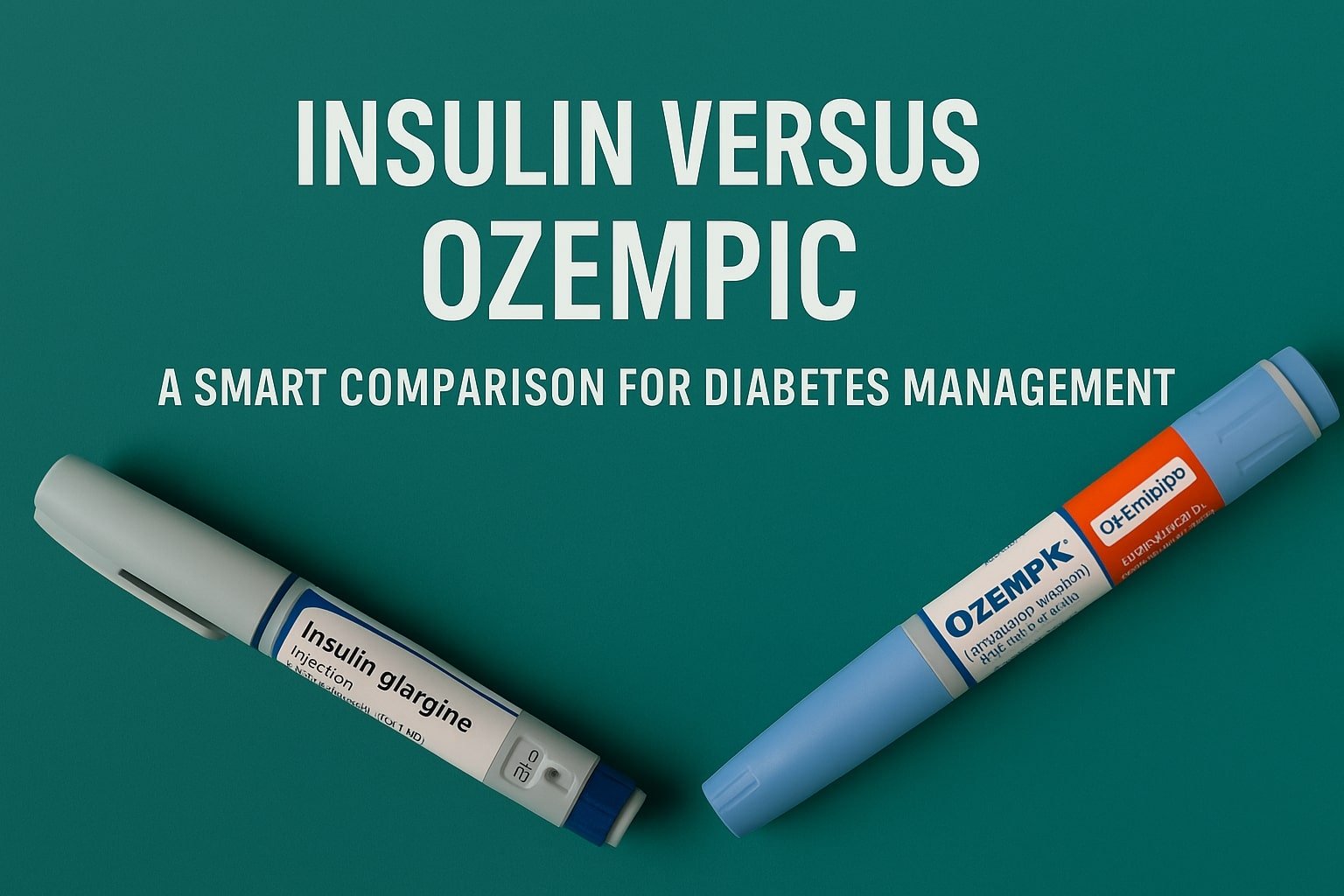In critical care, maintaining stable blood sugar levels is essential for patient outcomes. An insulin drip protocol serves as a crucial method for managing blood glucose levels effectively, enabling healthcare teams to provide consistent and safe care.
The primary objective of an insulin drip protocol is to maintain blood sugar within a target range. This reduces the risk of complications such as hypoglycemia and hyperglycemia while enhancing overall care quality in critical settings. These protocols are particularly vital for patients undergoing surgeries or managing severe illnesses where glucose control is critical.
An insulin drip protocol is a structured guideline designed to manage blood glucose levels in critical care settings by delivering insulin through an intravenous (IV) line. It outlines specific parameters such as the initial insulin dose, the rate of infusion, and the frequency of blood glucose monitoring. Developed collaboratively by healthcare teams—including physicians, nurses, and pharmacists—this protocol ensures that insulin is administered safely and effectively, tailored to the patient’s current clinical condition and medical history. Its primary goal is to maintain blood sugar within a target range, reducing the risk of complications like hypoglycemia and hyperglycemia, thereby improving patient outcomes in high-acuity care
Adult IV Insulin Drip Protocol — U.S. Quick Reference (DKA/HHS Included)
Here’s a concise,quick-reference table for adult IV insulin infusions. It’s educational and should be adapted to your hospital’s validated protocol and order set (DKA/HHS specifics included).
| Component | Default order / starting point | Details & algorithm notes |
|---|---|---|
| Indications | Critically ill or step-down patients with persistent BG ≥180 mg/dL despite SC insulin; DKA; HHS | Begin IV insulin using a validated written/computer protocol. Target BG for most adults in ICU: 140–180 mg/dL. |
| Insulin prep | Regular insulin 100 units in 100 mL 0.9% NaCl (1 U/mL); prime tubing | Use infusion pump; ensure separate line for other IVs. Local pharmacy prep policies apply. |
| Monitoring | POC BG q1–2 h (q30 min during initiation/instability); serum K+ per unit policy | Frequent POC is required for safe IV insulin; use FDA-cleared hospital meters; consider arterial/venous sampling if poor perfusion. |
| GENERAL ICU (non-DKA/HHS) – Initiation | Start per protocol (e.g., 1–2 U/h or nurse-driven algorithm) | Aim BG fall ~50–75 mg/dL/h; titrate with a validated rate-of-change table to maintain 140–180 mg/dL. |
| GENERAL ICU – Titration (example) | Use your hospital’s table; below is a generic pattern | If BG >250 and falling <50 mg/dL/h → ↑ by 1–2 U/h. If BG 140–180 → hold. If BG 110–139 → ↓ by 0.5–1 U/h. If BG 70–109 → ↓/hold and recheck in 15–30 min. (Hospitals should use a validated algorithm.) |
| DKA – Initiation | 0.1 U/kg/h continuous IV insulin (no routine bolus needed) after fluids and K+ review | When BG <250 mg/dL, add D5–D10 while continuing insulin; often halve rate to 0.05 U/kg/h until ketoacidosis resolves. Targets include closing ketosis; not just glucose. (NCBI) |
| HHS – Initiation | After fluids, if glucose stops falling, start 0.05 U/kg/h | More conservative insulin than DKA to limit osmotic shifts; add dextrose when BG approaches ≤300 mg/dL while continuing insulin. (NCBI, Cleveland Clinic Journal of Medicine) |
| Add dextrose | DKA: when BG <250 mg/dL → add D5–D10 with NS; HHS: consider ≤300 mg/dL | Prevents hypoglycemia while insulin continues to clear ketones (DKA) or to safely complete HHS correction. (NCBI, Cleveland Clinic Journal of Medicine) |
| Potassium (K⁺) | If K⁺ <3.5 mmol/L → hold insulin, give K⁺ (e.g., 10 mmol/h) until ≥3.5; If K⁺ 3.5–5.5 → 20–30 mmol K⁺/L of IV fluid; aim K⁺ 4–5 | Insulin lowers serum K⁺; replace proactively and monitor closely to avoid arrhythmias. (NCBI) |
| Hypoglycemia on drip | BG 50–74 mg/dL: hold infusion, give 12.5 g D50 IV, recheck q15 min until ≥100; BG <50 mg/dL: 25 g D50 IV; restart at 30–50% of prior rate once BG ≥175 and stable | Example nurse-driven steps; follow your hospital’s hypoglycemia policy. |
| Transition to SC insulin | Give basal insulin 2–4 h before stopping drip; calculate TDD from last 6–8 h of stable rates | Co-administering a small basal dose during infusion can reduce rebound hyperglycemia and shorten infusion time. (PMC) |
| Targets | ICU: 140–180 mg/dL for most; consider 110–140 mg/dL in selected patients if low hypoglycemia risk | Start therapy for persistent BG ≥180 mg/dL (confirmed). |
View Image Adult IV Insulin Drip Protocol
Notes & sources
- Use validated, nurse-driven protocols or computerized algorithms for rate adjustments; they reduce hypoglycemia and achieve target ranges more safely. (PMC)
- ADA Standards of Care in the Hospital (2024/2025): Initiate therapy for persistent BG ≥180 mg/dL; ICU target 140–180 mg/dL; POC frequency every 30 min–2 h for IV insulin. (PMC)
- Hyperglycemic crises (DKA/HHS) details: Fixed-rate infusion 0.1 U/kg/h (DKA); 0.05 U/kg/h (HHS); add dextrose as glucose falls; potassium thresholds as above. (NCBI, Cleveland Clinic Journal of Medicine)
- Example hypoglycemia treatment steps for patients on insulin drips come from a U.S. nurse-driven protocol (YNHHS). Use your local hypoglycemia policy if it differs.
This table is for U.S. adult inpatient use and does not replace your institution’s order sets. Exclusions/adjustments apply (pregnancy, ESRD/dialysis, pediatrics, euglycemic DKA, etc.). Always follow local policies and attending directives. (NCBI)
If you’d like, I can convert this into a printable 1-page checklist or a CSV you can drop into your EHR build.
Goals of Insulin Drip Protocols
Maintain Target Blood Glucose Levels:
- The recommended target range for blood glucose in most critically ill patients is 140-180 mg/dL, as per guidelines from the American Diabetes Association (ADA) and the Society of Critical Care Medicine (SCCM).
- Avoid both hyperglycemia (>180 mg/dL) and hypoglycemia (<70 mg/dL), which can have severe consequences.
Improve Patient Outcomes:
- Reduce the risk of infection, wound healing delays, and multi-organ dysfunction associated with uncontrolled hyperglycemia.
- Minimize variability in blood glucose levels, as fluctuations can contribute to poor outcomes.
Provide a Standardized Approach:
- Ensure consistency and safety across healthcare teams by using evidence-based protocols.
Key Components of an Effective Insulin Drip Protocol
1. Initiation Criteria:
- Hyperglycemia (>180 mg/dL) in critically ill patients after a confirmed blood glucose measurement.
- Patients on enteral or parenteral nutrition often require closer monitoring and may benefit from earlier initiation.
2. Blood Glucose Monitoring:
- Frequent monitoring (e.g., every 1-2 hours initially) is essential to assess the efficacy of the insulin infusion and avoid hypoglycemia.
- Once blood glucose levels stabilize, the monitoring interval may be extended to every 4 hours.
3. Dosing Adjustments:
- Use a titration table or algorithm to adjust the insulin infusion rate based on blood glucose readings.
- Tailor adjustments to the patient’s individual response and clinical condition.
4. Hypoglycemia Prevention and Management:
- Clearly define hypoglycemia thresholds and establish protocols for immediate intervention.
- Provide bedside glucose correction solutions, such as dextrose 50% injections, and adjust insulin rates accordingly.
5. Transition to Subcutaneous Insulin:
- When the patient’s condition stabilizes, transition to subcutaneous insulin therapy for long-term glycemic management.
- Discontinue the insulin drip after overlapping with subcutaneous insulin to prevent a gap in coverage.
Challenges and Considerations
Risk of Hypoglycemia:
- Hypoglycemia remains the most significant complication of insulin drip protocols. Implement safeguards such as low glucose alarms and standardized correction protocols.
Variability in Patient Response:
- Individual factors like insulin sensitivity, renal function, and concurrent medications can affect response to therapy. Adjust protocols to account for these differences.
Staff Training and Compliance:
- Ensure all healthcare providers involved are adequately trained on the protocol and understand the rationale behind each step.
- Regular audits and feedback can help maintain adherence and identify areas for improvement.
Understanding the Fundamentals of Insulin Drip Protocol

Insulin therapy is central to managing blood sugar, particularly in critical care environments. Administering insulin through an intravenous (IV) drip ensures precise glucose control. The protocol outlines the initial dose, infusion rate, and the frequency of glucose monitoring. These elements work together to prevent adverse events and promote optimal outcomes.
What is an Insulin Drip Protocol?
An insulin drip protocol is a standardized approach for delivering insulin intravenously. It is developed collaboratively by healthcare professionals, considering individual patient needs, medical history, and current clinical conditions. The protocol ensures consistent care while mitigating the risk of complications from improper glucose management.
Key Components of Protocol Implementation
- Initial Insulin Dose: Determined based on the patient’s glucose levels and medical status.
- Rate of Infusion: Adjusted to meet the target glucose range while minimizing fluctuations.
- Frequency of Blood Glucose Monitoring: Conducted at regular intervals, typically every 1-2 hours, depending on the patient’s stability.
Clinical Indicators for Insulin Drip Therapy
Indications for insulin drip therapy include conditions requiring tight glucose control, such as:
- Hyperglycemia
- Diabetic ketoacidosis
- Post-surgical glucose management
- Critical illnesses with glucose abnormalities
By following a protocol, healthcare teams ensure precise insulin administration, preventing complications and optimizing care.
Essential Guidelines for Safe Protocol Administration

Safety is paramount in insulin drip management. Healthcare providers must adhere to best practices, including:
- Verifying insulin solutions and concentrations before use.
- Calibrating infusion pumps to ensure accurate delivery.
- Monitoring patients closely for signs of hypo- or hyperglycemia.
Effective protocol implementation relies on collaboration among nurses, physicians, and pharmacists. Consistent communication and adherence to safety measures significantly reduce risks and enhance patient outcomes.
Monitoring and Adjusting Insulin Drip Protocols in Critical Care Settings

Frequent and accurate blood glucose monitoring is vital for managing patients on insulin drips. Adjustments to the protocol may be necessary to address fluctuations or evolving clinical conditions. Modifications can include changes in infusion rates, insulin dosing, or additional interventions to manage complications.
Healthcare professionals must maintain detailed records of glucose levels, insulin dosages, and protocol adjustments. These records are invaluable for ensuring continuity of care and supporting clinical decision-making.
Conclusion: Advancing Patient Care Through Effective Protocol Management
In critical care, managing insulin drip protocols effectively is integral to improving patient outcomes. Strict adherence to guidelines, diligent monitoring, and prompt adjustments ensure safe and efficient glucose management. This approach minimizes complications and promotes recovery.
Emerging technologies such as automated glucose monitoring and predictive algorithms hold promise for further refining insulin drip management. These innovations will enhance the precision and safety of care, ultimately benefiting patients in critical settings.
By prioritizing protocol adherence and embracing advancements, healthcare teams can continue to elevate the standard of care for critically ill patients.
FAQ
What is an Insulin Drip Protocol?
An insulin drip protocol is a structured guideline for administering insulin intravenously to control blood sugar levels in critical care.
What are the key components of an Insulin Drip Protocol?
The initial insulin dose, infusion rate, and frequency of blood glucose monitoring.
What are the clinical indicators for Insulin Drip Therapy?
High blood sugar, diabetic ketoacidosis, or conditions requiring tight glucose control.
What are the essential guidelines for safe Insulin Drip Protocol administration?
Verify insulin solutions, ensure correct pump settings, and monitor for hypo- or hyperglycemia.
How frequently should blood glucose be monitored during an Insulin Drip Protocol?
Typically, every 1-2 hours, depending on the patient’s condition.
What are the parameters for modifying an Insulin Drip Protocol?
Adjustments are made based on glucose trends, patient response, and clinical guidelines.
How are adverse events managed in Insulin Drip Protocol?
Rapid identification and intervention to address issues like hypoglycemia or insulin resistance.
What are the documentation requirements for Insulin Drip Protocols?
Accurate records of glucose levels, dosages, and protocol changes to ensure effective management.
By following these principles, healthcare teams can maintain high standards of care, ensuring safety and optimal outcomes for patients requiring insulin drip therapy.




